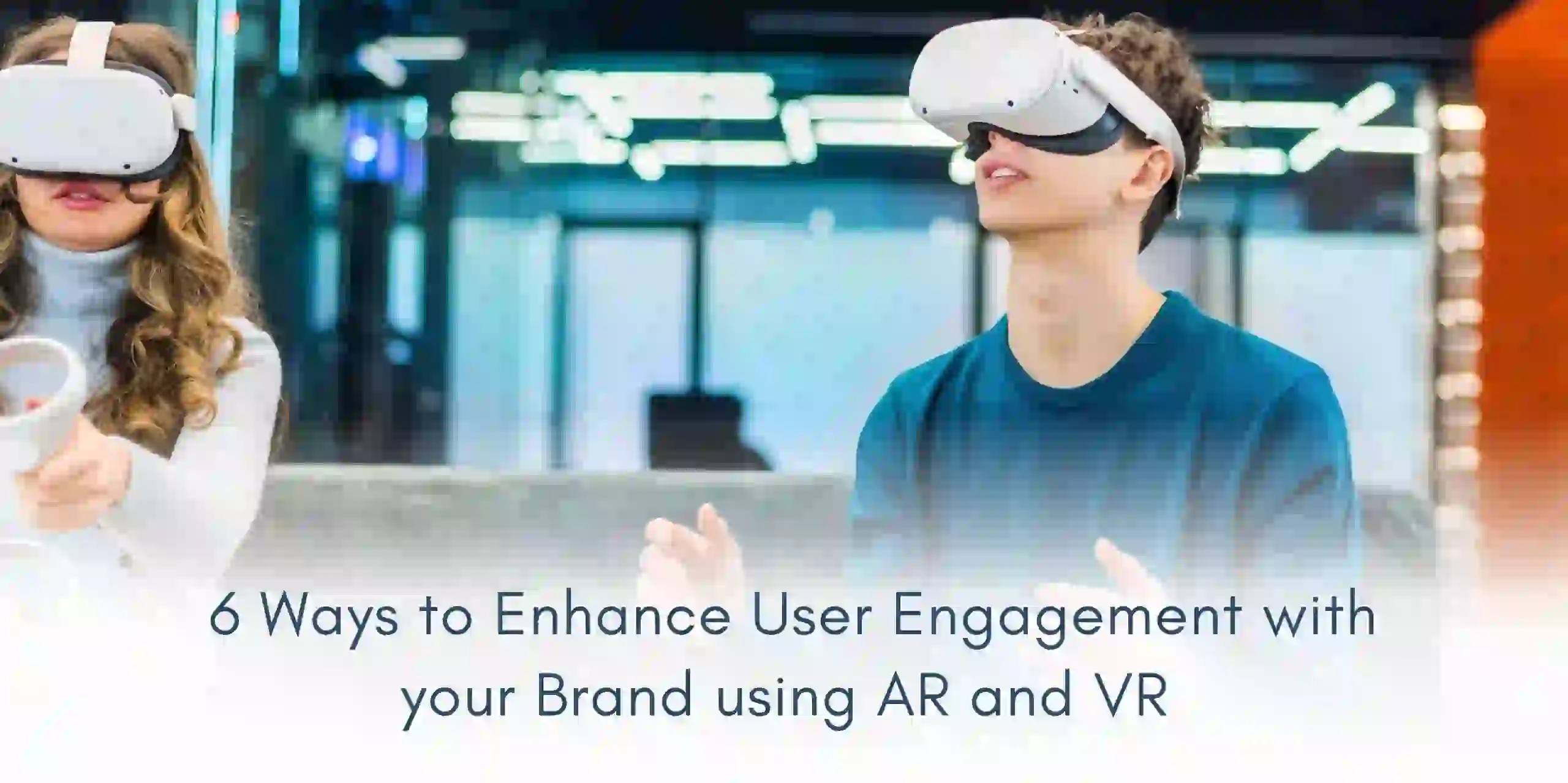May 28th, 2024
Category: ar vr,augmented reality,virtual reality
No Comments
Posted by: Team TA

In today’s rapidly evolving digital landscape, where grabbing and maintaining user attention is crucial, leveraging immersive technologies such as AR and VR presents a novel way to captivate audiences and elevate brand engagement. The emergence of products like the Apple Vision Pro exemplifies its power in delivering unparalleled brand experiences, capturing users’ interest with its captivating functionalities and features, ultimately enhance user engagement with AR VR.
According to Statista, the AR and VR market is projected to grow 9.64% per year, reaching an estimated market value of US$58.3 billion by 2028.
Enhance User Engagement with AR VR
Let’s evaluate how embracing AR and VR technology leads to establishing deeper connections with people and how these technologies may be used to increase brand engagement and create remarkable experiences.
1.) IMMERSIVE STORYTELLING
Immersive experiences can increase emotional engagement of customers by up to 40%, according to a PwC report. Engaging narratives are created that immerse the audiences deepening their emotional connection with the brand. This creates a lasting impression in their mind. Through AR and VR technology, users can experience virtual or augmented environments to feel like they’re part of the story.
By transporting customers to a different era or showing them the behind-the-scenes process of product development, AR and VR provide unforgettable experiences. By watching TOMS’ 360-degree Virtual Giving Trip video for instance, people can experience what it means to give children in need TOMS Giving Shoes. This visual experience strengthens the emotional bond between the brand and its customers.
2.) ENHANCED PRODUCT VISUALIZATION
AR and VR let users see products in highly detailed and interactive ways, enabling them to visualize them in real-life settings before making a purchase. Buying in this way creates a digital showroom experience with a wide variety of options. This helps to reduce uncertainty and improves the confidence of buyers. AR superimposes the digital image of the product into the live video feed of the smartphone allowing the users to see it in their environment. VR, on the other hand, allows you to experience and explore the product in a virtual environment from different angles. You can choose different customization options with the help of a headset.
Nike Fit uses AR technology to scan customers’ feet using their smartphone cameras to recommend the best shoe size, ensuring a perfect fit. Virtual reality showrooms at Audi allow customers to explore and customize cars in a virtual environment, enhancing the car-buying experience.
3.) INTERACTIVE MARKETING CAMPAIGNS
Marketing messages are made more meaningful and memorable as AR and VR provide a unique tool for creative advertisement. VR is mainly used for virtual events, product launches, and conferences to reach out to global audiences without being present there. This is a cost-effective and time-saving way of customer engagement. Gamifying marketing campaigns can enhance user engagement with AR VR. Interactive games, scavenger hunts, and social media filters can create a buzz around the product and the brand.
During London Fashion Week, Topshop launched a campaign that allowed customers to watch a live-streamed 360-degree virtual reality catwalk show from the comfort of a Topshop store. Over 1500 people experienced the show on-demand in the days following the event, generating global media attention for Topshop.
4.) IMPROVED CUSTOMER ENGAGEMENT
Today, users need more than passive interaction with the products and brands. The active interaction of customers with the brand and its products is made possible through AR and VR technology which also create a sense of ownership and involvement. They provide unmatched opportunities for customer engagement. This is evident in the tourism industry, where companies like Airbnb arrange virtual tours of the property before the booking. These virtual tours allow potential renters to explore the property as if they were physically present there. This not only improves the booking but also builds the trust in the brand.
AR, on the other hand, offers real-time interactive assistance to customers, reducing support costs and enhancing issue resolution capability.
5.) BETTER PRODUCT DESIGN
The product design process has been completely changed by the arrival of AR and VR. Testing prototypes in the virtual environment enables engineers to speed up the development process and cuts off the cost of physical prototypes.
Furthermore, companies like Adidas allow customers to design their sneakers using AR technology. Customers can select the color and material to create their personalized final product. This not only enhances customer engagement but also provides an opportunity to gather valuable user preferences and feedback.
6.) ENHANCED CUSTOMER SUPPORT
Immersive tools like AR and VR allow customer support agents to see through the client’s eyes. Instead of guiding the client with instructions and manuals they will be able to meet them in simulated environments and can see the trouble as they do. Far more meaningful conversations can happen due to this. The accuracy in solving the issue with immersive support can reduce customer frustration and reduce the average handle times too.
Bosch uses AR to provide a ‘Dial an Expert’ feature that gives visual instructions and guidance for repairing and maintaining their products. Customers can use their smartphones to see step-by-step instructions overlaid on the actual product.
In Summary
Augmented reality and virtual reality are changing the way businesses approach their customer engagement through interactive and immersive marketing campaigns, product design, visualization, and even customer support. As the technologies are becoming more innovative, businesses that embrace them become more competitive and advanced. The unique and memorable experiences presented to the customers will ultimately lead to customer satisfaction, loyalty, and business progress.
With the AR/VR development expertise in improving user engagement, your business can thrive in an immersive and customer-centric world.